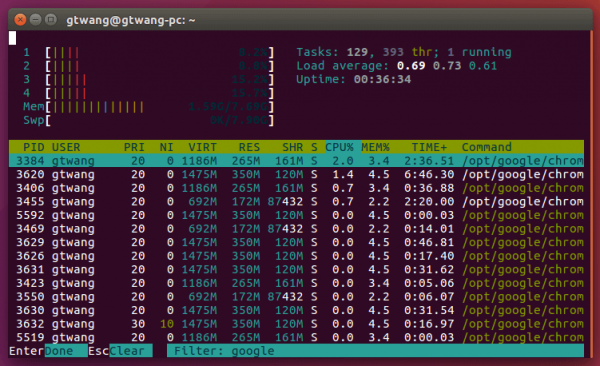
To add or remove columns in the view that the top tool provides, press the F key while you run the tool. In this example, you can observe in the first listed process for PID 19933 that the process exhibits high CPU usage, and memory usage is also high. To open the Task Manager equivalent in Linux, run the top command. This part will examine the top and htop command line tools to monitor processes. Linux has several tools that aim to achieve the same thing. In Windows, you can use Task Manager to do this. When you troubleshoot a performance problem, you might have to monitor the CPU and memory usage of a process to understand how its resource consumption evolves over time. A Linux local firewall is enabled and configured to allow SSH and HTTP traffic.Both ASP.NET Core applications are running as services that restart automatically when the server is rebooted, or the applications stops responding or fails.The second website listens for requests by using the buggyamb ( host header, and routes the requests to the second ASP.NET Core sample buggy application that is listening on port 5001.The first website listens for requests by using the myfirstwebsite host header ( and routes the requests to the demo ASP.NET Core application that is listening on port 5000.However, you should have following items already set up if you followed all the steps of this training so far:

PrerequisitesĪs in the previous parts, this part is structured to put more emphasis on the theory and principals to follow when you start to troubleshoot. This article introduces how to use top and htop command line tools to monitor processes.

For example if you are running htop and you would like to view the programs using the most RAM, you would hit F6 on your keyboard and select the MEM% filter then hit enter. Htop provides many filters that you can sort through to show only the information you are looking for. Unlike the top command, htop will provide all of the processes running and not just the top resource abusing ones. The htop command line tool is very useful for locating what programs are using up more resources than intended.


 0 kommentar(er)
0 kommentar(er)
